What if the key to solving Earth’s resource scarcity lies not on our planet, but in the vast expanse of space? Imagine a future where artificial intelligence (AI) unlocks the secrets of asteroid mining, turning celestial rocks into infinite sources of precious metals, rare minerals, and even water. Could AI be the ultimate space prospector, revolutionizing humanity’s access to resources and reshaping our future?
This isn’t science fiction. Visionaries like Elon Musk, founder of SpaceX, and Neil deGrasse Tyson, the astrophysicist and science communicator, have long speculated about the untapped potential of space resources. Even Michio Kaku, the theoretical physicist and futurist, has argued that asteroid mining could be the next giant leap for humanity. But how do we get there? The answer lies in the marriage of AI and space exploration.
This article explores the groundbreaking intersection of AI and asteroid mining, a field poised to redefine resource extraction and space exploration. From identifying valuable asteroids to developing autonomous mining systems, AI is the linchpin in this cosmic endeavor. We’ll delve into the science, challenges, and potential of AI-driven space mining, offering a roadmap for how humanity can harness these technologies to secure a sustainable future.
1. The Promise of Asteroid Mining: Why Space is the Next Frontier for Resources
1.1 The Resource Crisis on Earth
Earth is running out of resources. From rare earth metals like neodymium, essential for smartphones and electric vehicles, to platinum used in catalytic converters, our planet’s reserves are dwindling. According to a World Bank report, demand for these materials could increase by 500% by 2050. And let’s not forget water—our most precious resource—which is becoming scarcer due to climate change and overuse.
Terrestrial mining isn’t just unsustainable; it’s also environmentally destructive. Open-pit mines, deforestation, and toxic waste are just a few of the side effects. Plus, the geopolitical tensions over resource-rich regions often lead to conflict. It’s like fighting over the last slice of pizza at a party—except the pizza is made of lithium, and the party is Earth.
1.2 The Untapped Wealth of Asteroids
Enter asteroids—the cosmic treasure chests floating in our solar system. These space rocks come in three main flavors: C-type (carbonaceous), S-type (silicate), and M-type (metallic). C-type asteroids are rich in water and organic compounds, S-types contain silicate minerals and metals like nickel and iron, and M-types are packed with precious metals like platinum and gold.
One asteroid, 16 Psyche, is estimated to contain enough metal to be worth $10,000 quadrillion. That’s right—quadrillion. To put that in perspective, the entire global economy is worth about $100 trillion. If we could mine just one asteroid, we could theoretically make every human on Earth a billionaire. (Of course, that would also make a dollar about as valuable as a piece of Monopoly money, but hey, it’s fun to dream.)
1.3 The Role of Space Mining in Sustainability
Asteroid mining isn’t just about getting rich; it’s about survival. By sourcing materials from space, we can reduce the environmental impact of mining on Earth. Imagine a world where we no longer need to dig up rainforests or drain aquifers for resources. Instead, we could harvest water from asteroids to support life in space or use asteroid-derived metals to build habitats on the Moon or Mars.
This isn’t just pie-in-the-sky thinking. Companies like Planetary Resources and Deep Space Industries are already working on technologies to make asteroid mining a reality. And with AI leading the charge, the dream of a sustainable, resource-rich future is closer than ever.
2. The Role of AI in Identifying and Analyzing Asteroids
2.1 AI-Powered Asteroid Detection
Imagine a cosmic treasure hunt where the map is written in starlight, and the treasure is buried in rocks hurtling through space. That’s essentially what AI is doing in asteroid detection. Using machine learning algorithms, AI sifts through mountains of data from telescopes like NASA’s NEOWISE to spot asteroids that could be worth billions—or even trillions—of dollars. Companies like Planetary Resources are already leveraging AI to identify resource-rich asteroids, turning what was once science fiction into a tangible business plan.
But how does it work? AI analyzes patterns in the light reflected by asteroids, helping scientists determine their size, shape, and composition. Think of it as a cosmic barcode scanner, but instead of beeping at a box of cereal, it’s identifying platinum-rich space rocks. And the best part? AI can do this faster and more accurately than humans ever could. It’s like having a super-smart space prospector who never sleeps.
2.2 Spectral Analysis and Composition Mapping
Once an asteroid is detected, the next step is figuring out what it’s made of. This is where spectral analysis comes in. By studying the light spectra reflected by an asteroid, AI can determine its chemical composition. For example, C-type asteroids are rich in carbon and water, while M-type asteroids are packed with precious metals like platinum and gold. It’s like a cosmic version of “Goldilocks and the Three Bears,” but instead of porridge, we’re looking for the perfect mix of resources.
AI’s ability to interpret spectral data is crucial for identifying water-rich asteroids, which could be game-changers for future space missions. Water can be split into hydrogen and oxygen, providing both fuel and breathable air for astronauts. It’s like finding a gas station and a convenience store in the middle of the desert—except the desert is in space, and the convenience store is a rock.
2.3 Predictive Modeling for Asteroid Trajectories
Knowing what an asteroid is made of is only half the battle. The other half is figuring out where it’s going. AI excels at predicting asteroid trajectories, using complex algorithms to calculate their orbits and potential collision risks. This isn’t just important for mining—it’s also critical for planetary defense. After all, no one wants to be the person who accidentally nudges an asteroid into a collision course with Earth.
AI’s predictive modeling capabilities are already being used in missions like OSIRIS-REx, which successfully collected samples from the asteroid Bennu. By analyzing Bennu’s trajectory, AI helped ensure the mission’s success, proving that it’s not just a tool for finding asteroids—it’s also a tool for safely navigating them.
3. Autonomous Spacecraft: AI’s Role in Mining Operations
3.1 Designing AI-Driven Mining Probes
So, you’ve found a valuable asteroid. Now what? Enter the AI-driven mining probe, a robotic space miner that can extract resources without human intervention. These probes are equipped with everything they need to mine in the harsh conditions of space: propulsion systems, robotic arms, and drilling tools. It’s like sending a Swiss Army knife into space, but instead of opening bottles, it’s mining platinum.
Designing these probes is no small feat. They need to operate in microgravity, withstand extreme temperatures, and navigate the unpredictable terrain of an asteroid. But with AI at the helm, these challenges are becoming more manageable. AI can optimize the design of mining probes, ensuring they’re both efficient and durable. It’s like having a cosmic mechanic who can fine-tune your car for a cross-country road trip—except the car is a mining probe, and the road trip is through the asteroid belt.
3.2 Real-Time Decision-Making in Space
Once a mining probe is deployed, AI takes over the real-time decision-making. This includes navigating the asteroid, avoiding obstacles, and deciding where to drill. AI’s ability to process vast amounts of data in real-time is crucial for these tasks. For example, if a probe encounters a particularly hard rock, AI can analyze the situation and decide whether to drill through it or find a softer spot. It’s like having a cosmic foreman who can make split-second decisions on the job site.
AI’s real-time decision-making capabilities are already being tested in missions like NASA’s Mars rovers. These rovers use AI to navigate the Martian surface, avoid obstacles, and conduct scientific experiments. The lessons learned from these missions are directly applicable to asteroid mining, proving that AI is up to the task of operating in the harsh conditions of space.
3.3 Communication and Data Transmission
One of the biggest challenges of asteroid mining is communication. The vast distances between Earth and asteroids mean that there’s a significant delay in transmitting data. This is where AI comes in. By using advanced data compression and prioritization algorithms, AI can ensure that the most important data is transmitted first. It’s like having a cosmic postal service that knows exactly which letters to deliver first.
AI also enables edge computing, where data is processed on the probe itself rather than being sent back to Earth. This reduces the need for constant communication and allows the probe to make decisions in real-time. It’s like having a super-smart assistant who can handle all the details while you focus on the big picture. And in the case of asteroid mining, the big picture is nothing less than the future of humanity.
4. Processing and Utilizing Asteroid Resources
4.1 In-Situ Resource Utilization (ISRU)
Imagine landing on an asteroid and turning it into a cosmic gas station. That’s the promise of In-Situ Resource Utilization (ISRU), a fancy term for using materials found in space to support missions. Water, for instance, can be split into hydrogen and oxygen to create rocket fuel. Metals like iron and nickel can be used for construction. Even carbon-rich asteroids could provide raw materials for 3D printing tools and habitats.
Here’s how ISRU works in practice:
- Water Extraction: AI-powered drills and heaters extract water from hydrated minerals. This water can be used for drinking, growing food, or making fuel.
- Metal Refining: Robotic smelters process metallic asteroids to extract valuable metals like platinum, gold, and rare earth elements.
- 3D Printing: Using asteroid-derived materials, 3D printers can manufacture spare parts, tools, and even entire structures in space.
NASA’s NASA has already tested ISRU technologies on the Moon, and companies like SpaceX are exploring ways to use these techniques for Mars missions. The potential is staggering: a single water-rich asteroid could fuel thousands of space missions.
4.2 Transporting Resources to Earth and Beyond
Once we’ve mined the asteroid, how do we get the goodies back to Earth? This is where things get tricky. Transporting heavy metals across millions of miles of space isn’t exactly cheap or easy. But AI and advanced propulsion systems could make it feasible.
Here are some options:
- Return Missions: Send mining probes that can extract resources and return them to Earth. This is expensive but could be viable for high-value materials like platinum.
- Orbital Refineries: Process materials in space and send only the refined products back to Earth. This reduces the weight and cost of transportation.
- Space-Based Manufacturing: Use asteroid resources to build infrastructure in space, such as satellites, space stations, or even spacecraft. This eliminates the need to transport materials back to Earth altogether.
Companies like Planetary Resources and Deep Space Industries are already working on these concepts. The key is to make the process cost-effective, and AI could be the game-changer here.
4.3 Economic and Legal Implications
Who owns the resources mined from asteroids? This question is at the heart of the emerging space economy. The Outer Space Treaty of 1967 states that no nation can claim sovereignty over celestial bodies, but it’s silent on private ownership. In 2015, the U.S. passed the Commercial Space Launch Competitiveness Act, allowing American companies to own and sell resources mined in space.
Here’s a quick breakdown of the legal landscape:
| Country/Organization | Policy |
|---|---|
| United States | Allows private ownership of space resources. |
| Luxembourg | Similar legislation to the U.S., encouraging space mining. |
| United Nations | Working on international guidelines for space resource utilization. |
As more countries and companies enter the space mining race, establishing clear legal frameworks will be crucial to avoid conflicts and ensure fair access to resources.
5. Challenges and Ethical Considerations
5.1 Technical and Logistical Hurdles
Space mining isn’t just a sci-fi dream—it’s a logistical nightmare. The challenges are immense, from the high costs of space missions to the risks of operating in microgravity and harsh environments. Here are some of the biggest hurdles:
- Cost: Launching a single mining mission can cost billions of dollars. Companies and governments need to find ways to make space mining economically viable.
- Technology: Current mining and refining technologies aren’t designed for space. Developing new tools and systems will require significant innovation.
- Space Debris: Mining operations could generate space debris, increasing the risk of collisions and complicating future missions.
Despite these challenges, organizations like NASA and ESA are investing heavily in research and development to overcome these obstacles.
5.2 Ethical Concerns
Space mining raises some serious ethical questions. Who gets to benefit from these resources? Could a single company or nation monopolize space wealth? And what about the environmental impact on asteroids and other celestial bodies?
Here are some key ethical considerations:
- Monopolization: Without proper regulation, space mining could lead to a new era of resource inequality, where only the wealthiest nations and corporations benefit.
- Environmental Impact: Mining could alter the composition and trajectory of asteroids, potentially causing unintended consequences for the solar system.
- Cultural Heritage: Some asteroids may have scientific or cultural significance. Mining them could destroy valuable information about the history of our solar system.
Addressing these concerns will require international collaboration and thoughtful regulation. Organizations like the United Nations are already working on guidelines to ensure that space mining benefits all of humanity.
5.3 Ensuring Global Equity
Space mining has the potential to transform the global economy, but only if we ensure that its benefits are shared equitably. This means creating frameworks that allow all nations, not just the wealthy ones, to participate in and benefit from space resource utilization.
Here’s how we can achieve global equity:
- International Collaboration: Establish partnerships between nations, companies, and organizations to share knowledge and resources.
- Revenue Sharing: Create mechanisms to distribute the profits from space mining to developing countries and communities.
- Education and Training: Invest in programs to train people from all over the world in space science and technology, ensuring that everyone has a chance to participate in this new frontier.
By addressing these challenges and ethical considerations, we can ensure that space mining becomes a force for good, unlocking new opportunities for humanity while preserving the integrity of our solar system.
6. AI Solutions: How Would AI Tackle This Issue?
6.1 Step-by-Step AI-Driven Approach
1. Data Collection and Analysis:
Deploy AI algorithms to process data from telescopes, satellites, and probes. Use deep learning to identify patterns in asteroid composition and trajectories. For example, NASA’s NEOWISE mission has already demonstrated how AI can sift through vast amounts of space data to identify near-Earth objects.
2. Mission Planning and Optimization:
AI-powered simulations can design efficient mining missions. Predictive analytics can minimize risks and costs. Companies like Planetary Resources are already leveraging AI to optimize mission parameters.
3. Autonomous Operations:
Develop AI systems for real-time navigation, resource extraction, and problem-solving. Implement reinforcement learning to improve performance over time. The Mars Science Laboratory has shown how AI can enable autonomous navigation and decision-making in harsh environments.
4. Resource Processing and Utilization:
AI-driven ISRU systems can refine materials in space. Machine learning can optimize 3D printing and manufacturing processes. The 3D-Printed Habitat Challenge is a testament to the potential of AI in space manufacturing.
5. Global Collaboration and Governance:
Use AI to model equitable resource distribution frameworks. Develop international standards for space mining operations. The Outer Space Treaty provides a legal foundation, but AI can help refine and enforce these guidelines.
6.2 Scientific and Technological Innovations
Links to studies on AI in space exploration (e.g., NASA’s AI initiatives). Examples of AI applications in robotics and autonomous systems. The NASA AI Robotics Challenge showcases cutting-edge AI applications in space robotics.
6.3 Action Schedule/Roadmap (Day 1 to Year 2)
Day 1: Assemble a multidisciplinary team of scientists, engineers, and AI experts. Key personnel could include Dr. Dante Lauretta from the OSIRIS-REx mission and Dr. Ellen Stofan from NASA.
Day 2: Secure funding from governments, private investors, and space agencies. Engage with institutions like SpaceX and ESA.
Week 1: Begin data collection from existing telescopes and space missions. Utilize data from Hubble and James Webb Space Telescope.
Week 2: Develop AI algorithms for asteroid detection and analysis. Collaborate with universities like MIT and Caltech.
Month 1: Design prototypes for autonomous mining probes. Use insights from Mars rovers.
Month 2: Conduct initial simulations of mining missions. Leverage supercomputing resources from Oak Ridge National Laboratory.
Year 1: Launch a pilot mission to a near-Earth asteroid. Partner with Blue Origin for launch services.
Year 1.5: Analyze data from the pilot mission and refine AI systems. Engage with Stanford for advanced data analysis.
Year 2: Scale up operations and plan larger-scale mining missions. Collaborate with international partners like JAXA and Roscosmos.
The Future is Written in the Stars
The fusion of AI and asteroid mining represents a bold leap forward for humanity. By harnessing the power of artificial intelligence, we can unlock the vast resources of space, ensuring a sustainable future for generations to come. While challenges remain, the potential rewards—economic, environmental, and existential—are too great to ignore. As we stand on the brink of this new frontier, one thing is clear: the stars are not just our destination, but our salvation.
Imagine a world where resource scarcity is a thing of the past, where humanity thrives not just on Earth but across the solar system. This is not a distant dream but a tangible future, made possible by the relentless march of technology and human ingenuity. The journey will be fraught with challenges, but the rewards will be astronomical—literally.
So, what are we waiting for? The tools are at our disposal, the roadmap is clear, and the stars are calling. Let’s answer that call and embark on this grand adventure together. The future is not just in our hands; it’s in our algorithms, our rockets, and our collective will to reach for the stars.
What do you think? Are we ready to take this giant leap? Share your thoughts in the comments below, and don’t forget to subscribe to our newsletter for more insights into the future of technology and space exploration. Become a permanent resident of iNthacity: the "Shining City on the Web" and join the conversation!
Frequently Asked Questions (FAQ)
1. What are the most valuable resources found in asteroids?
Asteroids are like cosmic treasure chests, packed with valuable materials that could transform industries on Earth and beyond. The most sought-after resources include:
- Precious metals: Platinum, gold, and other rare metals that are essential for electronics, medical devices, and renewable energy technologies.
- Rare earth metals: Elements like neodymium and dysprosium, which are critical for manufacturing smartphones, electric vehicles, and wind turbines.
- Water: Water-rich asteroids could provide a vital resource for future space missions, serving as both drinking water and a source of hydrogen and oxygen for rocket fuel.
For example, a single asteroid like 16 Psyche is estimated to contain enough metal to be worth $10,000 quadrillion—yes, that’s a real number!
2. How does AI help in asteroid mining?
Artificial intelligence is the backbone of modern asteroid mining. Here’s how it works:
- Detection: AI algorithms analyze data from telescopes like NASA’s NEOWISE to identify asteroids with valuable resources.
- Analysis: Machine learning models interpret spectral data to determine an asteroid’s composition, helping scientists decide which ones are worth mining.
- Autonomy: AI powers autonomous spacecraft, enabling them to navigate, drill, and extract resources without human intervention. Think of it as a self-driving car, but in space!
Companies like Planetary Resources are already using AI to pioneer this field.
3. What are the biggest challenges of asteroid mining?
While the potential is enormous, asteroid mining isn’t without its hurdles:
- Cost: Space missions are expensive. Launching a single mining probe can cost billions of dollars.
- Technology: Mining in microgravity and extreme temperatures requires cutting-edge robotics and AI systems.
- Ethics: Who gets to mine asteroids? How do we ensure that space resources benefit everyone, not just a few wealthy nations or corporations?
Organizations like UNOOSA are working to address these challenges through international collaboration.
4. Who owns the resources mined from asteroids?
This is a hotly debated topic. Currently, the Outer Space Treaty states that no nation can claim sovereignty over celestial bodies. However, it doesn’t explicitly address private ownership of resources. In 2015, the U.S. passed the Commercial Space Launch Competitiveness Act, allowing American companies to own and sell materials they extract from asteroids. Other countries are likely to follow suit, but global agreements will be crucial to avoid conflicts.
5. How soon can we expect asteroid mining to become a reality?
While it might sound like science fiction, asteroid mining is closer than you think. Here’s a rough timeline:
- 2020s: Pilot missions to near-Earth asteroids, like NASA’s OSIRIS-REx, will test key technologies.
- 2030s: Larger-scale mining operations could begin, focusing on water-rich asteroids to support lunar and Martian colonies.
- 2040s and beyond: Fully autonomous mining systems could harvest metals and other materials, revolutionizing industries on Earth and in space.
Companies like SpaceX and Blue Origin are already laying the groundwork for this future.
6. What are the environmental impacts of asteroid mining?
Unlike terrestrial mining, asteroid mining has the potential to be far less damaging to the environment. Here’s why:
- No ecosystems to disrupt: Asteroids are barren rocks, so mining them won’t harm wildlife or ecosystems.
- Reduced Earth mining: Sourcing materials from space could reduce the need for destructive mining practices on Earth.
However, there are concerns about space debris and the long-term effects of altering asteroids. Organizations like the European Space Agency (ESA) are studying these issues to ensure responsible practices.
7. How can I get involved in asteroid mining?
If you’re excited about the future of space mining, there are plenty of ways to get involved:
- Education: Study fields like aerospace engineering, robotics, or planetary science at institutions like MIT or Caltech.
- Careers: Work for companies like Planetary Resources or space agencies like NASA.
- Advocacy: Support policies that promote sustainable and equitable space exploration.
The stars are calling—will you answer?
8. What are the risks of asteroid mining?
Like any bold endeavor, asteroid mining comes with risks:
- Technical failures: Space is a harsh environment, and equipment can malfunction.
- Economic uncertainty: The high costs of space missions could lead to financial losses if resources aren’t as abundant as expected.
- Geopolitical tensions: Competition over space resources could spark conflicts between nations or corporations.
To mitigate these risks, international cooperation and robust legal frameworks will be essential.
9. Can asteroid mining help with climate change?
Absolutely! Here’s how:
- Rare earth metals: These are essential for renewable energy technologies like solar panels and wind turbines.
- Reduced mining on Earth: Sourcing materials from space could decrease the environmental damage caused by terrestrial mining.
- Space-based solutions: Technologies developed for asteroid mining could also be used to address climate challenges, such as capturing carbon or monitoring Earth’s ecosystems.
By looking to the stars, we might just save our planet.
10. What’s next for asteroid mining?
The future of asteroid mining is bright, but it will require innovation, collaboration, and a bit of daring. Here’s what to watch for:
- New missions: Keep an eye on upcoming missions from NASA, ESA, and private companies.
- Technological breakthroughs: Advances in AI, robotics, and propulsion systems will drive progress.
- Global partnerships: International cooperation will be key to ensuring that space resources benefit all of humanity.
The stars are no longer out of reach—they’re the next frontier for innovation and discovery.
Wait! There's more...check out our gripping short story that continues the journey: Odessia
Disclaimer: This article may contain affiliate links. If you click on these links and make a purchase, we may receive a commission at no additional cost to you. Our recommendations and reviews are always independent and objective, aiming to provide you with the best information and resources.
Get Exclusive Stories, Photos, Art & Offers - Subscribe Today!
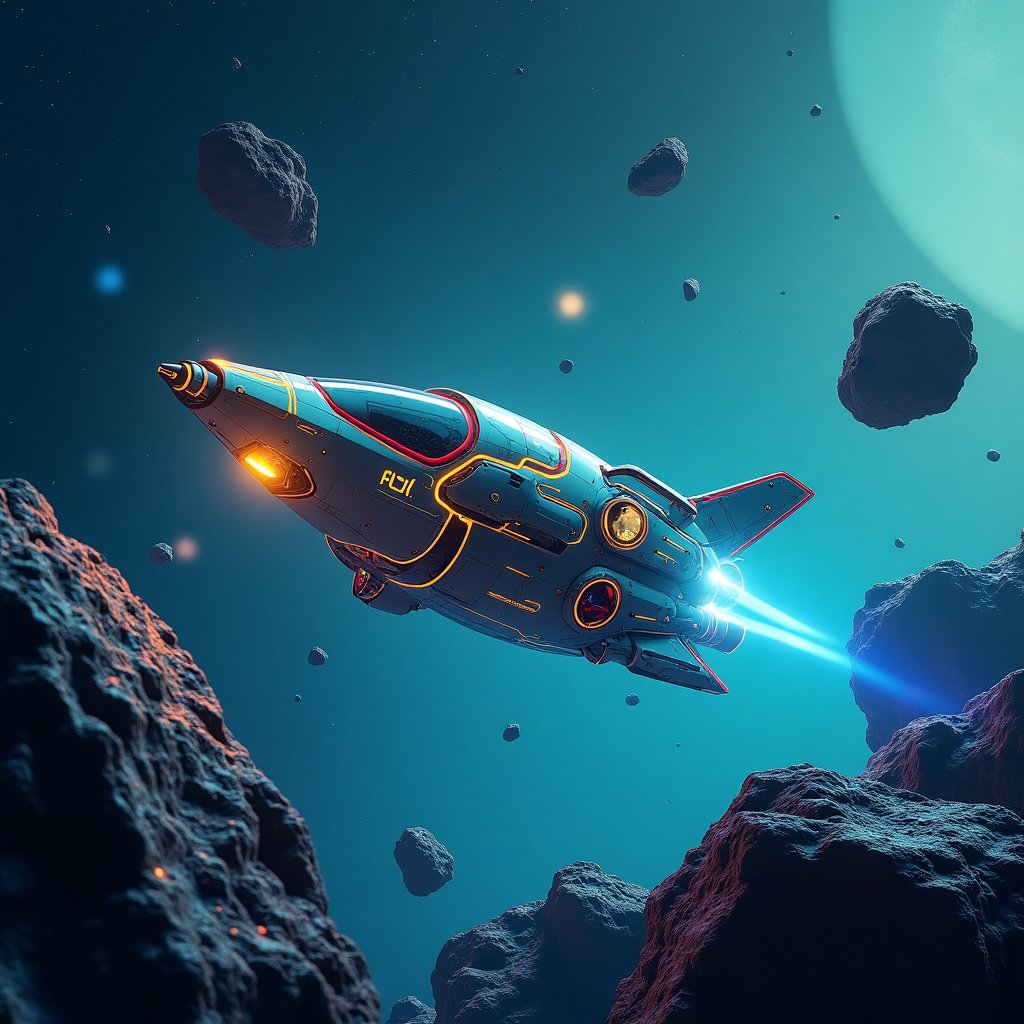
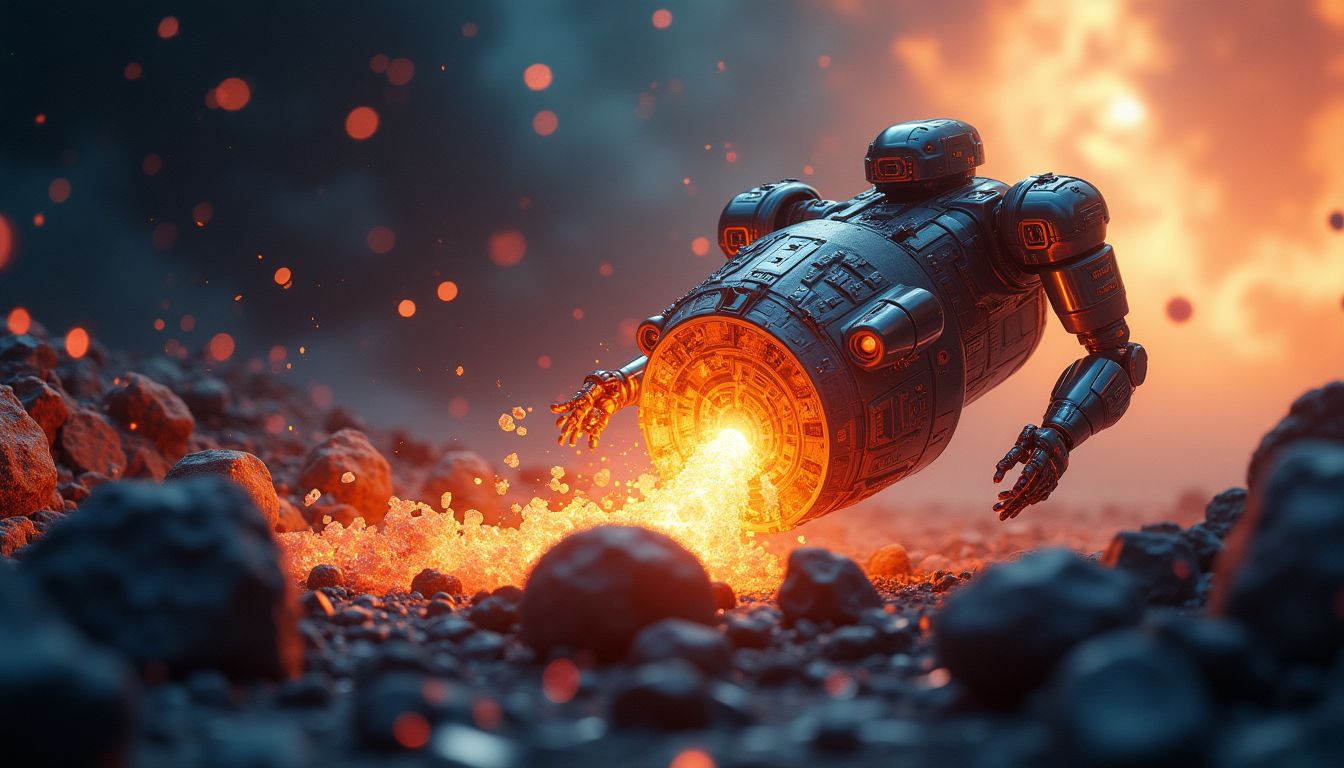
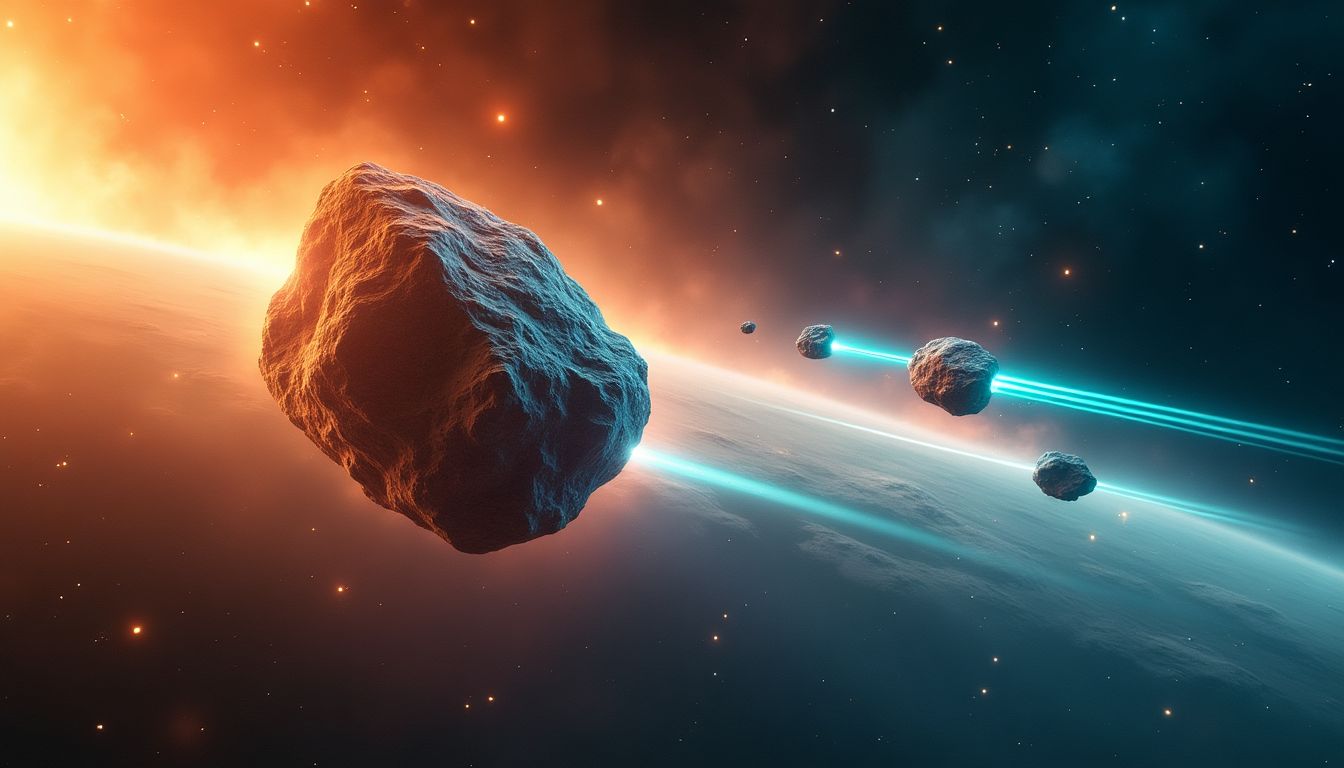
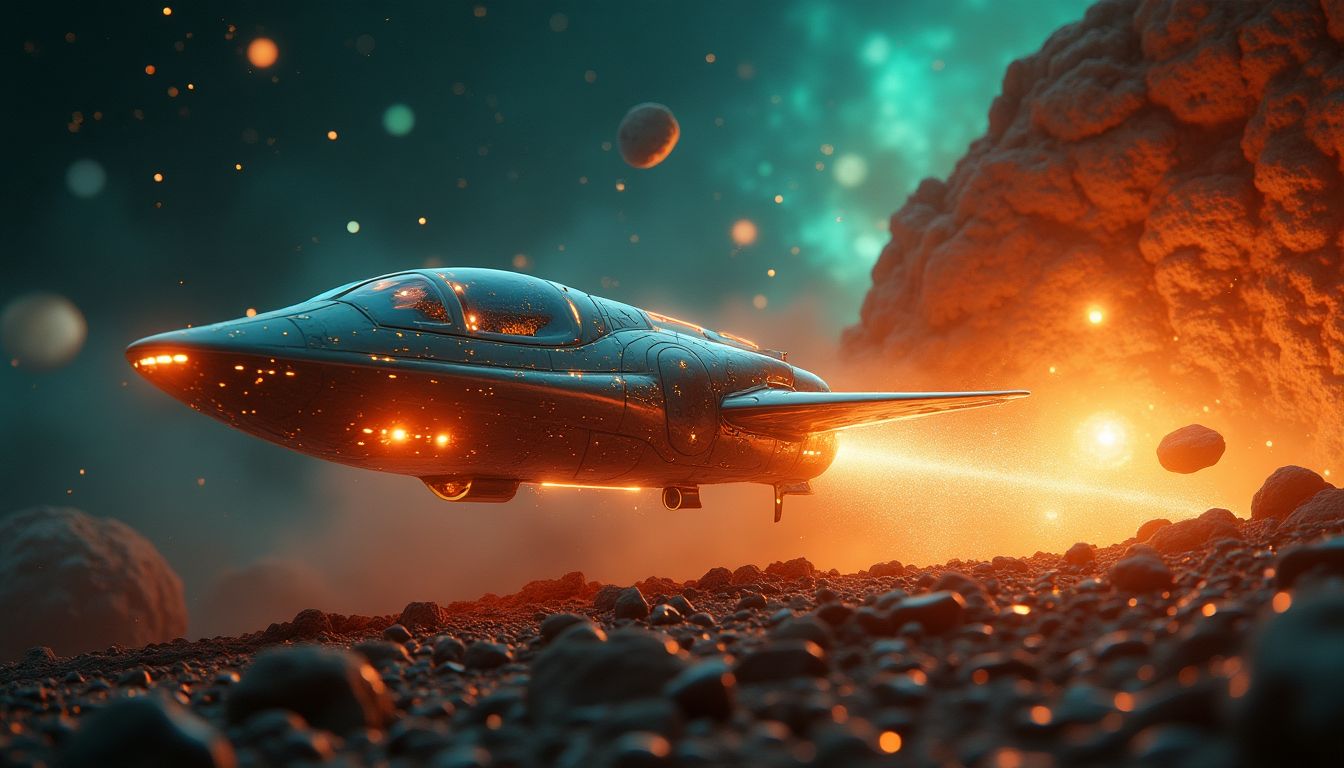
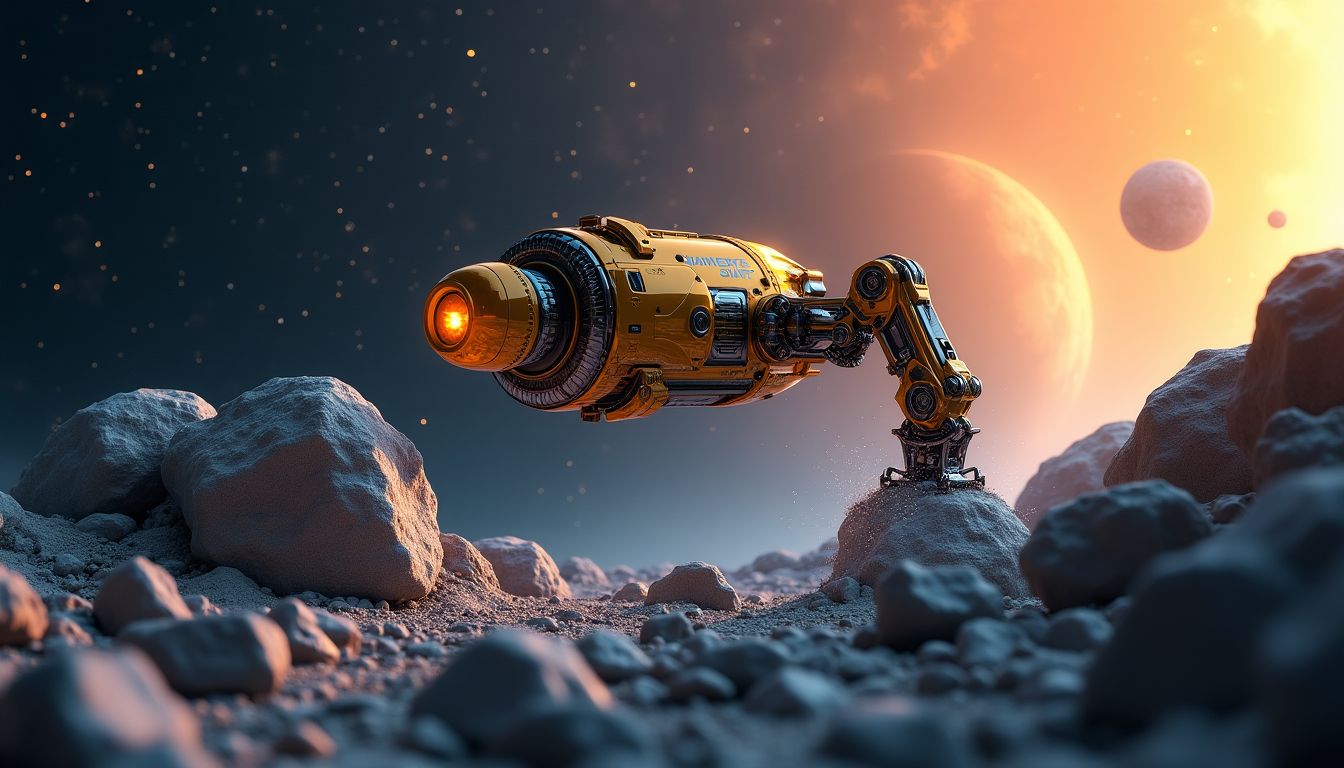
























Post Comment
You must be logged in to post a comment.